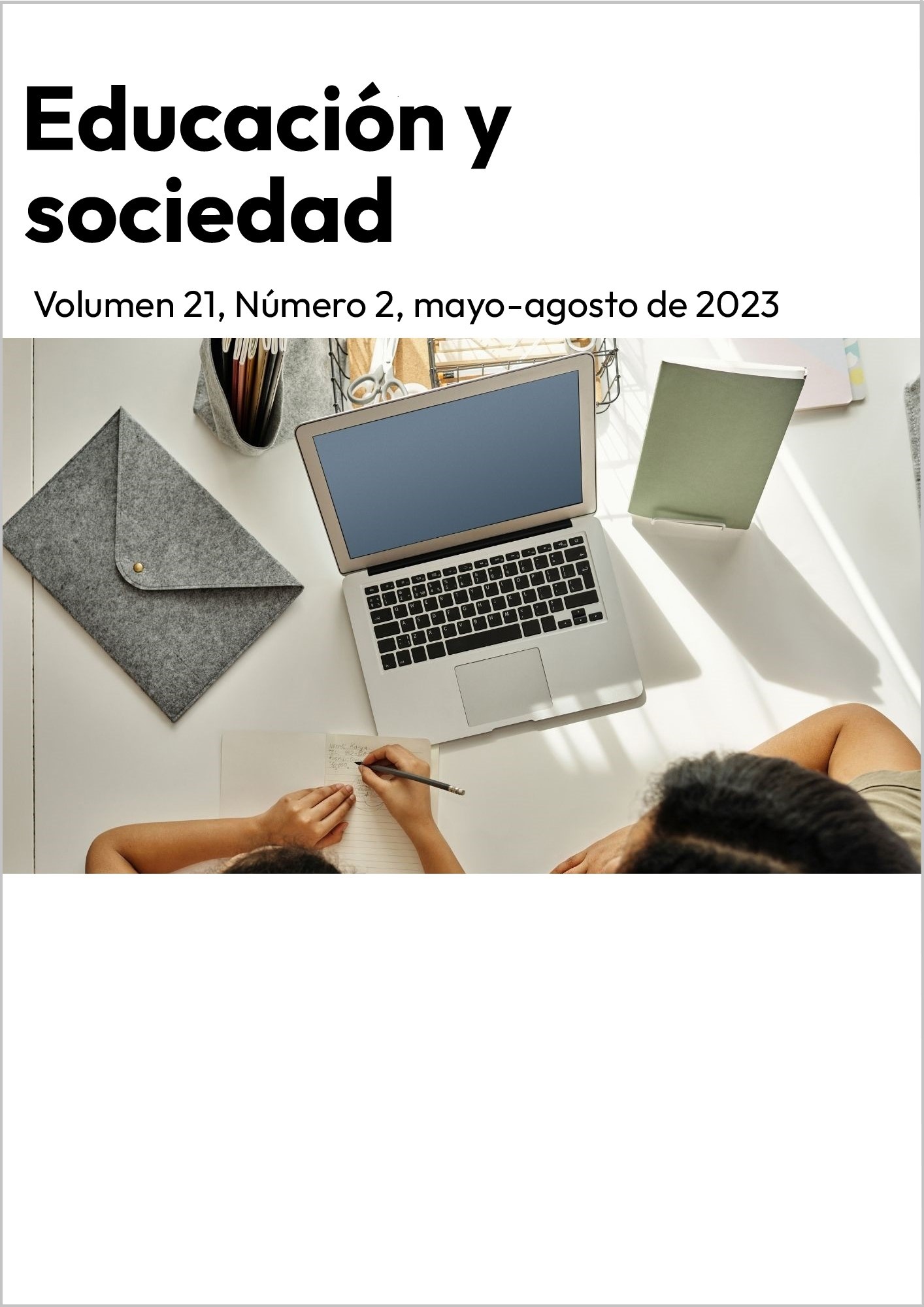M-learning en el proceso de enseñanza-aprendizaje de la asignatura de Ingeniería de Software
DOI:
https://doi.org/10.5281/zenodo.7976407Keywords:
mobile learning, m-learning, technologyAbstract
Technology-mediated learning has required the development of new skills to teach and build knowledge. Associated with this, the introduction of mobile devices as a teaching tool has provided unprecedented flexibility and freedom, revolutionizing educational practices in the 21st century. In this work, an investigation was carried out on mobile learning or m-learning in order to determine interesting considerations to take into account for the insertion of this novel learning in the teaching-learning process of Software Engineering in the Computer Science career of the FICE-UNICA. The design of the contents was taken into account as an essential element for this.
References
Abreu Alvarado, Y, et al (2018). “El Proceso de Enseñanza-Aprendizaje de Los Estudios Lingüísticos: Su Impacto En La Motivación Hacia El Estudio de La Lengua [The Teaching-Learning Process of Linguistic Studies: Its Impact on Motivation towards the Study of the Language].” Revista MENDIVE 16(4), 610–23.
Adams Becker, S.,et al (2017). “RESUMEN INFORME HORIZON Edición 2017 Educación Superior.” Organización de Las Naciones Unidas Para La Educación, La Ciencia y La Cultura (2017), 68–87.
Alarcón Barbán, E. (2018). “Estrategia Metodológica Para La Incorporación de La Tecnología Móvil En El Proceso de Enseñanza Aprendizaje de La Asignatura Ingeniería de Software En La UCI.” 72.
Anon. (2017). “Plan de Estudio Bioquímica.Pdf.” 1–90.
Bauer, F. (1983). “Definición de Ingeniería Del Software.” 1996.
De, Desarrollo, Nancy E. Saldis, Marcelo M. Gómez, Carina M. Colasanto, Claudia T. Carreño, Felisa Díaz Gavier, Aldo Guerra, Maximiliano González, Gonzalo Medina, Greta Jose, and Marianela Luna. (2017). “Desarrollo de Contenidos Para El Aprendizaje M-learning.” 4(2).
Elmer Carballo, AF Panadeiro, AM Sánchez. (2014) “Centro de Gestión de La Información y El Conocimiento (CEGIC), Como Ente Dinamizador e Integrador de La Calidad de La Estrategia Maestra de Informatización En La UNICA. Trabajo Presentado En Universidad 2010. 7mo Congreso Internacional de Educación Superi.”
Fombona Cadavieco, J, P, Sevillano M A. (2013). “Beneficios Del M-learning En La Educación Superior Benefits of M-learning in Higher Education.” Educatio Siglo XXI 31(2):211–34.
Herrera, S I.,. Fennema. M C (2011). “Tecnologías Móviles Aplicadas a La Educación Superior.” 620–30.
Mack, S, et al (2011). “Modeling Flavor Development in Cereal Based Foams under Thermal Treatment.” Procedia Food Science 1(2):1223–30. https://doi.org/10.1016/j.profoo.2011.09.182
Oliva, P, et al 2016. “Valoración Del Mlearning En El Proceso de Aprendizaje de Estudiantes de La Salud.” Revista Cubana de Educacion Medica Superior 30(4), 372–81.
Reinoso, G G (2019). “M-learning, a Path to Ubiquitous Learning in Higher Education in Ecuador.” RISTI - Revista Iberica de Sistemas e Tecnologias de Informacao 2019(E18), 47–59.
UPM_GATE. (2013). “Guía Para La Implantación Del MOBILE LEARNING.” Universidad Politécnica de Madrid, 1–19.
Valero, C C et al. (2012). Tendencias actuales en el uso de dispositivos móviles en educación. La Educación Digital Magazine, 147, 1–21. http://www.educoas.org/portal/la_educacion_digital/147/pdf/ART_UNNED_EN.pdf
Downloads
Published
How to Cite
Issue
Section
License
Copyright (c) 2023 Educación y sociedad

This work is licensed under a Creative Commons Attribution-NonCommercial-ShareAlike 4.0 International License.
Los autores ceden su derecho de autor a Educación y Sociedad y otorgan a todos los usuarios potenciales, de manera irrevocable y por un período de tiempo ilimitado, el derecho de utilizar, copiar, transformar y distribuir el contenido. La cesión de derecho de autor incluye también:
- Traducir, adaptar, reutilizar, resumir el trabajo y ejercer todos sus derechos sobre dichas adaptaciones, resúmenes, extractos y obras derivadas.
- Incluir el trabajo y su versión traducida, adaptada o resumida, total o parcialmente, en bases de datos informatizadas, selección o recopilación de textos digitales o impresos a disposición de terceros.
Cada autor asume que en caso de que el artículo fuese aprobado para su publicación en la revista Educación y Sociedad:
- Cede sus derechos patrimoniales y autoriza al comité editorial para la publicación del documento con el correo electrónico y la afiliación institucional de los autores.
- Autoriza la divulgación en la página web de la revista, en repositorios y directorios en se incluye o pueda incluirse en el futuro.
- Certifica que ha contribuido directamente al contenido intelectual de este manuscrito.
- Se responsabiliza públicamente con su contenido y acepta que su nombre figure en la lista de autores.
- Garantiza que el artículo es un documento original y no ha sido publicado total ni parcialmente, en ningún otro lugar.
- No ha incurrido en fraude científico, plagio o vicios de autoría; en caso contrario se exime de toda responsabilidad a la revista Educación y Sociedad y se declara responsable.
- Se compromete a no presentar este artículo a otra revista para su publicación, hasta recibir la decisión de la editorial de la publicación sobre el concepto final.











